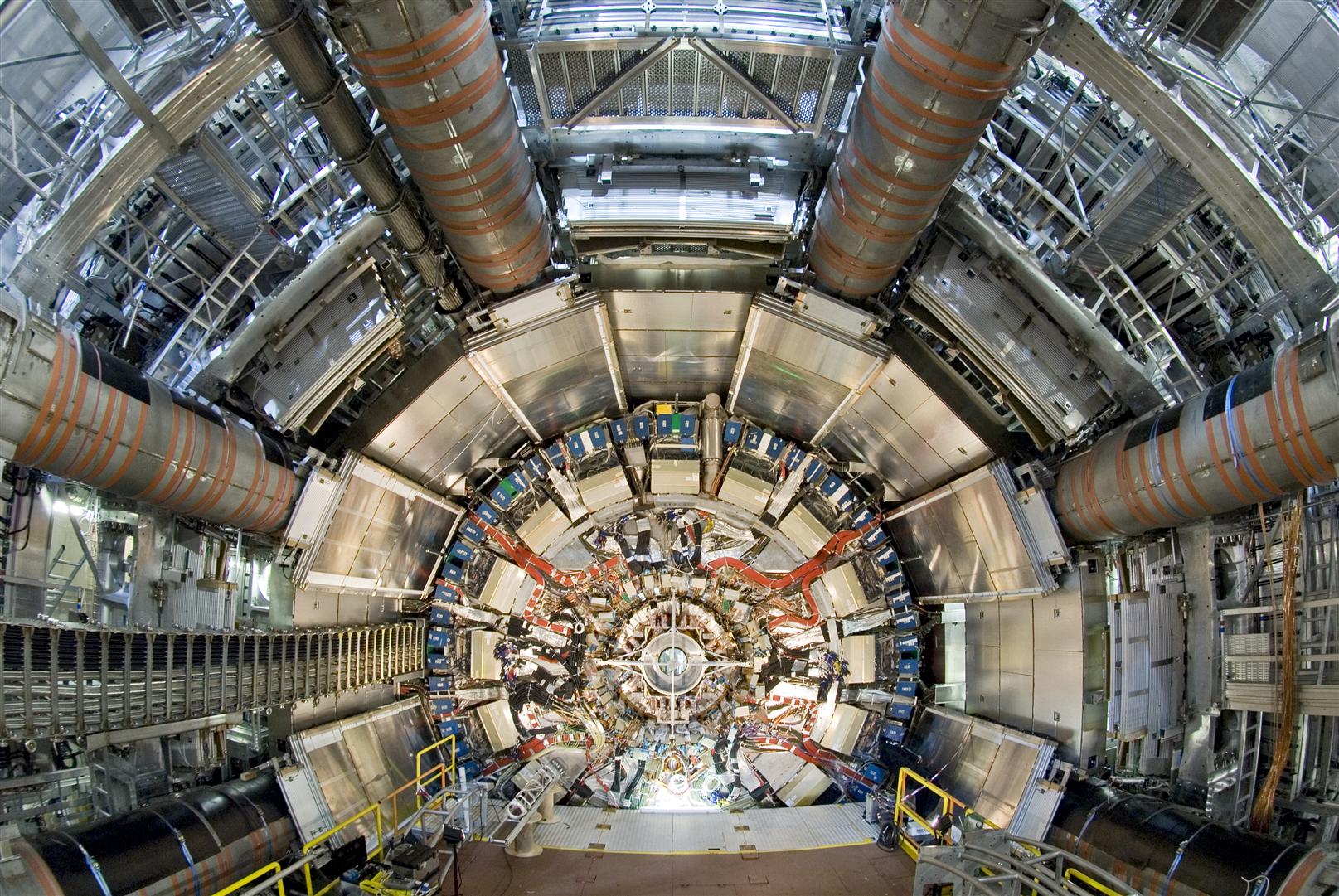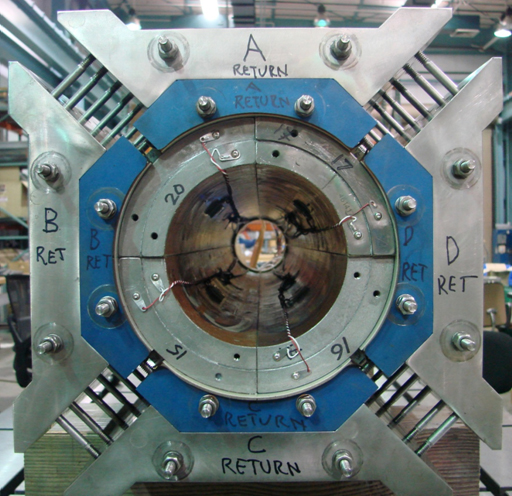Future Colliders May Dwarf Today's Largest Atom Smasher

LONDON — So, physicists have found the Higgs boson. What next?
It took three years for the world's most powerful particle accelerator, the Large Hadron Collider (LHC), to spot the elusive Higgs boson particle, which is thought to explain how other particles get their mass.
It took the international science lab CERN much longer, though, to build the machine beneath the mountains straddling France and Switzerland — nearly two decades, and at a cost of billions of dollars. There, protons are blasted through the 17-mile-long (27 kilometers) ring, where they crash into each other, and the resulting energy is converted to new and sometimes exotic particles.
However, if scientists want to look for new physics discoveries beyond the Higgs boson, in the form of new exotic particles and interactions, even the Large Hadron Collider may not be enough, said Terry Wyatt, a physicist at the University of Manchester who works on the LHC's ATLAS detector, one of seven particle-detector experiments conducted at CERN.
Speaking at a conference on the Higgs boson here at the Royal Society in January, Wyatt outlined what kind of enormous science experiments would be needed to go beyond the science that the LHC may deliver.
At first, and perhaps for the next decade, the LHC will have to perform at much higher energies to find new physics. In fact, once it's restarted in 2015 after a technical upgrade, the collider will be capable of operating at a maximum collision energy of 14 tera-electronvolts (TeV). [Beyond Higgs: 5 Elusive Particles That May Lurk in the Universe]

Future upgrades, probably sometimes around 2022, will involve the replacement of the collider's current accelerator-ring magnets with much stronger ones, Wyatt said. This way, the LHC will become a more powerful accelerator in its own right, and it may even get a shiny new name: the High Luminosity LHC.
Sign up for the Live Science daily newsletter now
Get the world’s most fascinating discoveries delivered straight to your inbox.
That upgrade will not significantly increase the machine's collision energy, although it will boost its luminosity by about 10 times — in other words, the number of proton-proton collisions it can achieve at a given time will grow tenfold, increasing the volume of data it produces by the same factor.
If that's still not enough to spot new particles and confirm any extensions of the Standard Model, or the reigning model explaining the behavior of subatomic particles, a bigger and more powerful replacement may eventually be inevitable, said Wyatt, the former leader of the DZero Experiment, which investigated the fundamental nature of matter at the Fermi National Accelerator Laboratory's (Fermilab) Tevatron collider in Illinois.
Circular or linear
One idea is to switch to far higher collision energies than the LHC can produce — for example, with a 50-mile-long (80 km) accelerator ring that would be three times larger than the LHC. Just like its predecessor, it would be housed at CERN, and collide protons. The first geological feasibility studies are already being carried out.
The larger ring and more powerful magnets would yield much higher collision energies of about 80 to 100 TeV, and possibly lead to many more massive new particles. However, said Wyatt, high-energy field magnets for this possible LHC successor would be a big technical challenge, because magnets of the kind used to build the LHC are not able to reach the required field strengths. [Photos: The World's Largest Atom Smasher (LHC)]
"The tunnel to house such a machine might possibly be completed by around 2040," he added. "In addition, such a tunnel could also house an accelerator to collide electrons and positrons at a much lower energy, but nevertheless sufficient to produce and study Higgs bosons."
Another suggestion for a next high-energy particle collider is to build a linear machine, provisionally titled the International Linear Collider (ILC). It is not yet clear where it would be housed, but some researchers in Japan have proposed to build it there.
Instead of moving particles in a circle, the machine would be a straight accelerator some 19 miles (31 km) long. It would no longer be colliding protons but instead lighter-mass particles — electrons and their antimatter partners called positrons — sent from either end of the tunnel.
It is tricky to accelerate such light particles in a ring collider, because each time they make a loop, they radiate energy, which means the electron doing the rounds would quickly lose most of its energy.
To smash electrons at very high energy, a linear collider makes more sense. It would be a straight pipe with a particle accelerator at either end, through which electrons and positrons would be sent to smash and annihilate each other. (When matter and antimatter collide, they annihilate each other.)
The machine would accelerate the particles to much higher energies of up to 1000 giga-electronvolts. If approved, it might deliver beams sometime in the 2030s, Wyatt said.
However, a linear collider would produce fewer collisions than a circular one. "This is because the beams of particles pass through one another only once and then are lost, whereas in a circular collider, they pass by one another thousands of times a second," Wyatt said.
Even higher-energy linear electron-positron colliders might be achievable if a novel acceleration technique being developed at CERN can be shown to work. This technique uses a very intense but low-energy beam to produce the power to accelerate a low-intensity but very-high-energy second beam.
Muons, not protons
Finally, scientists are looking into a possibility of a ring that would smash muons — the heavy cousins of electrons — together. It could potentially be housed at Fermilab, Wyatt said, but it probably wouldn't be built anytime soon — maybe sometime between 2040 and 2050. [Images: Inside the World's Top Physics Labs]
Muons have masses between those of protons and electrons — they're much heavier than electrons, so they don't radiate all their energy away as they zip around a circular collider, but they're not quite as heavy as protons. Protons are made of other particles, and when they collide, some of their energy washes away, as the proton breaks up into more elementary particles.
The collider would only accelerate muons at around 3 to 6 TeV, according to Wyatt.However, muons are elementary particles; colliding them would mean pretty much all of their energy would go toward creating new particles. This would make the data of a muon collider rival with those of a much-higher-energy proton accelerator — at least for some physics studies and searches for new particles. However, muons are also very unstable; they decay almost immediately when produced in the lab.
Such technical difficulties must be overcome before it makes sense to build a muon collider.
Starting now
There is a reason for all the speculation about more powerful colliders. If scientists want to use a next-generation machine from the moment the LHC is no longer able to meet their needs, then the research and development need to happen how.
Any decision to start construction of such a machine would have to be made by the end of this decade, as it might take a decade or two to build the structure, Wyatt said.
The scientists won't know whether their research into the next generation of particle colliders will ever be used.
"We have the LHC now because of the foresight and efforts of the leaders of the field in the 1980s, and it's our responsibility to start planning for a healthy future for elementary-particle physics in decades to come," Wyatt said.
Follow us @livescience, Facebook & Google+. Original article on Live Science. Follow the author on Twitter @SciTech_Cat









